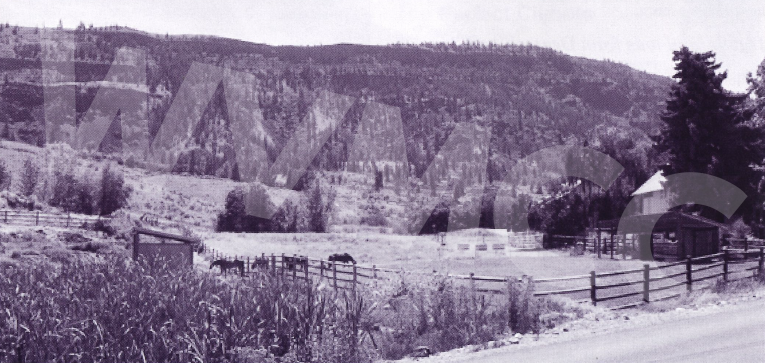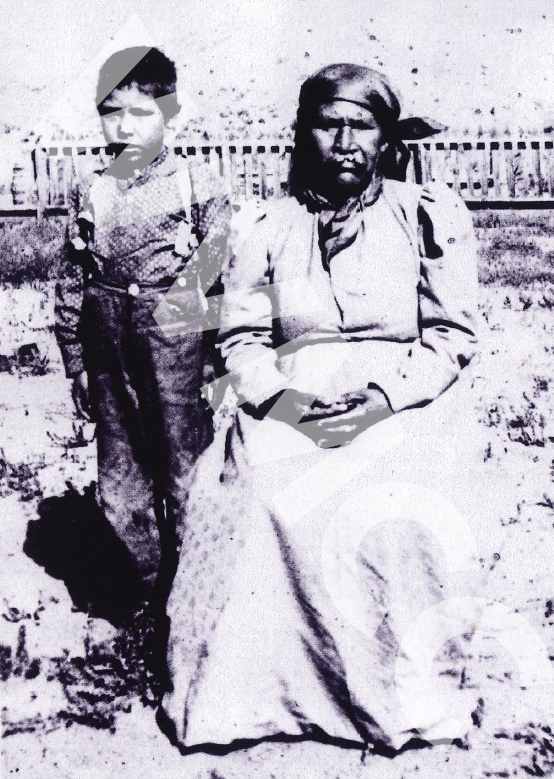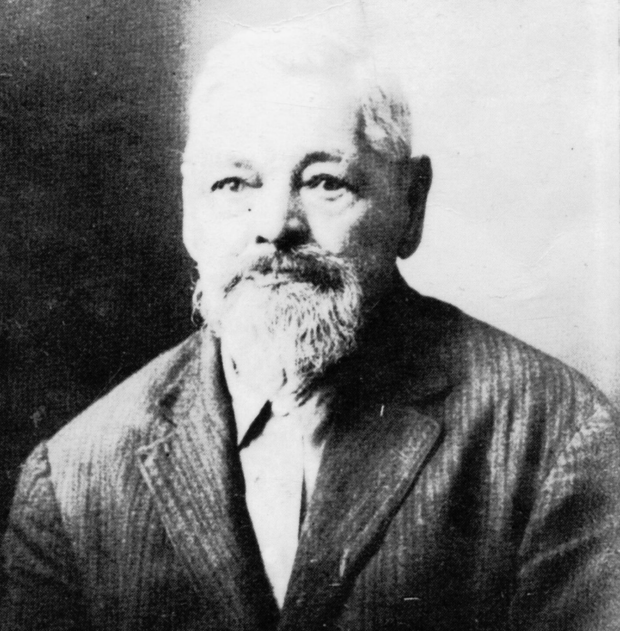Dutch John Galler: The Valley’s First Vintner – 6/14/2024
Written by Chris Rader
The Wenatchee Valley is taking its place among the great wine-making regions of the world, with Washington second only to California in U.S. wine production and international awards. The success of the local wine industry would have amazed the area’s first winemaker, “Dutch” John Galler. Indeed, the current population of the Greater Wenatchee area would be inconceivable to the pioneer who was the region’s very first white settler.
It was 1868 when Galler first crossed Colockum Pass and arrived at what’s now known as Malaga – four years before the Miller-Freer Trading Post opened at the confluence of the Wenatchee and Columbia rivers. He was living in the Kittitas Valley at the time, growing grapes and hunting and trapping in a broad territory that reached as far as Nahahum Canyon, near presentday Cashmere.
On one of his trips over Colockum Pass (N’Kol lock ala, “where the crows live”) he discovered a goodsized stream flowing into the Columbia. He followed it northward to its source, a spring emerging from the bottom of Jumpoff Ridge. With no one around to enforce the Homestead Act, Galler simply erected a sign at the spring to stake his territory. He would take up permanent residence there a few years later, bringing seedlings from the Malaga grapes he had cultivated around Ellensburg.
Dutch John was from Deutschland
Galler was born in Baden, Germany, probably in January 1813. “Dutch John didn’t know what year he was born,” said Della Miller, sister of Galler neighbor George Miller, who arrived in Malaga in 1897. “He always explained it by saying, ‘I was born the year the Black Sea froze over.”‘
After fighting under Franz Sigel in a German revolution for popular government, Galler was among hundreds of thousands who emigrated from Germany to America when their cause was lost. In 1849 he brought his wife and two young sons to Philadelphia, where his sister and her husband lived. Galler’s wife died shortly after they arrived. Feeling too restless to live in a city, he left the children with his sister and headed west. After trapping in eastern Nebraska for two years without seeing another white man, he continued westward to Montana and finally to Washington Territory. Galler never learned to read or write, nor did he ever return to the East Coast, so he lost contact with his family.
According to a Dec. 19, 1968 Wenatchee Daily World article titled “Dutch John Colorful Pioneer”:
He claimed many firsts, such as being on the first boat to come up the Missouri River to bring materials to lay out Fort Omaha. On the Elkhorn River, west of Omaha, the Indians let him stay because he only hunted and trapped and did not pose any threat to their rule that no white man should take up land in their country. Other white men were killed and wagons burned and supplies confiscated.
He told friends… that he thought he was the first settler in Nebraska, where he saw many wagon trains headed for the west for the gold country…Galler was a friend of the Indians. So far as is known he only told them one falsehood- that he was French, because the Indians told him they did not kill Frenchmen.
Galler and his partner Fred Ludi were the first white men to settle around Ellensburg. Galler farmed a little, but trapping and hunting were his main source of income. He sold his beaver, fisher and marten furs to stores in Seattle through John Shoudy, who owned Ellensburg’s first store.
On one of his explorations of the Malaga area before settling down and establishing his vineyard, Galler was traveling in winter with a group of Native Americans. They were crossing Tarpiscan Creek when the ice broke and he plunged into the frigid water. The others continued on their way with the exception of a girl of about 16. Her name was Mary (Se-mul-talks); her parents were Peter Phillip (She-eimtkin), a medicine man from a coastal tribe, and Mary (Enions-impekin) of the Wenatchi band of the Colville Confederated Tribes.
His next-door neighbor, Earl Young, told the late Rufus Woods the story as Galler had related it to him (and as published in Woods’ newspaper). “I had fallen in the water. It was so cold that I wanted to lie down and go to sleep. I was freezing. The Indians left me, but little Mary stayed with me, hammered away and made me so mad that I fought back. In that way, she kept me from freezing to death. Later she got a fire started and I thawed out.”
A year or two later, at the age of 60, Dutch John Galler married Mary in an Indian ceremony. Their first child, Louise (nicknamed Lucy), was born in Malaga March 14, 1874. The couple had six daughters: Lucy, Mary, Frances, Theresa, Victoria and Anna – and four sons: Bill, Charley, Louis and Fred. Eight survived to adulthood.

Courtesy of the Wenatchee Valley Museum and Cultural Center. The former Joe Miller homestead, at the base of Jumpoff Ridge in Malaga, contained the spring on which Dutch John Galler staked a claim in the 1870s. Galler lived below this property but irrigated his apples and grapes by means of a ditch from the spring. The spring, one of three on property currently owned by Gary and Jeannie King, currently yields 200 gallons a minute, according to Jeannie King. It forms a pond (opposite page) Just below the trees behind the horses pictured above. The Galler Ditch is still in operation today.
Their homestead was 80 acres, located near the junction of today’s Joe Miller Road and Hamlin Road above Three Lakes. With plentiful water and good soil, the land was ideal for farming. The land has since been subdivided and has gone through several ownerships including Joe Miller, Leo Hill, L.D. Keithley and the Carmody family. The portion containing the spring, at the base of Jumpoff Ridge, is now in the hands of Gary King.
Galler dug a ditch from that spring to irrigate his crops. The first irrigation canal to be built in the Greater Wenatchee area, it became known as the Galler Ditch and is still in use today, its water allocated by shares. Jack Hill, a former officer with the Galler Ditch Company, said the 160 shares change hands as property is sold. “It used to provide water for six or eight farms,” he said. “Now the area has gotten so developed, especially around Dixie Lane, it’s hard to keep track. Things have changed.” Hill said the ditch company now owns the rights to the main spring, which forms a pond on the Kings’ property, and several smaller springs that are piped into it. In 1930 the company dammed the stream flowing southward through a meadow, and formed Meadow Lake. The Galler Ditch flows into the lake and out of it toward West Malaga Road.
Galler planted apples and crabapples and raised cattle, but he was best known for his vineyard. Neighbor Earl Young later recalled seeing the barefooted Galler children tromping the grapes in a four-foot-deep vat to produce the juice for their father’s winemaking. Young said Galler planted 20 acres to grapes and made 15 to 20 barrels of “sour German wine” each year. He reportedly earned $2,000 a year in profits around the turn of the last century.
Putting out the welcome mat
Galler was a familiar figure to travelers over Colockum Pass from the 1870s to about 1910, as related in A History of Central Washington [ed. Lindley M. Hull, 1929]. “He was fortunate in having (a) good water right, and, possessing a talent for horticulture, in less than five years he made his small section of the desert blossom as the rose …. He understood the manufacture of wine, and as his ranch was close to the main highway for freighters and emigrants headed for the many points in North Washington, including the Big Bend country, his place became a popular resort.”
The Galler family was hospitable, feeding the travelers and making them comfortable before they continued their journey. Hull gives an example:
In 1883, the George Blair family was headed for the Wenatchee country. A night was spent on the Ellensburg Mountains in the midst of a snow storm which had a depressing effect, but on reaching the John Galler place a day or two later where they found warm and agreeable temperature, orchard and vineyard loaded with luscious fruits and heard the music of cackling hens, the members of this home-seeking family concluded the country was all right.
By 1887 the Reed family had homesteaded in the area near modern-day Alcoa. Grace Reed Wine recalled, “I went to school with some of the younger Galler children. They were always clean and neat and smart in school. We used to have to walk past the Galler place on the way home from school. We used to be afraid that some of the wine customers might hurt us, but, of course, they never did. The Galler house was a pretty good house for that day, with a porch all along the front.”
Though many of the immigrants were eager customers for Galler’s wine, they were not his main source of income. Historian Bernice Gellatly Greene wrote in the Wenatchee World on Jan. 5, 1978, “He sold chiefly to Chinese miners, who lived and placer-mined along the banks of the Columbia River and its tributaries, and later to railroad workers laying track for the Great Northern Railway. They are the men who named the town of Malaga for Dutch John’s Malaga grapes.”
In Half Sun on the Columbia, John Brown and Robert Ruby wrote of a big gathering of tribes at the mouth of the Wenatchee River in 1879. “A small sprinkling of curious cowmen and miners came and mingled with the Indians in their camps. Squawman John Galler, already famous along the Columbia for his fine grape wine, was there. Probably he found customers eager to sample his product.”
Greene observed, “Dutch John did not make wine for purposes of intoxication, but for health. He was a temperate man, and his family consumed wine and only in small amounts, and that only when sick, used as medicine.”
Rufus Woods reported in the Wenatchee Daily World on Aug. 15, 1918: “Asked if he had ever been sick in his life, Dutch John said he was sick in Wenatchee once. His son Bill says he never remembers having seen him sick. ‘Did you ever get drunk?’ was asked the old centenarian. ‘Yes, I got drunk in Germany once already,’ and he smiled. He said he drank wine while he was in Wenatchee but never enough so that it affected him any.”

Courtesy of the Wenatchee Valley Museum and Cultural Center. Dutch John’s wife Mary (Se-mul-talks) Galler and her youngest son Fred are shown here in a photograph taken in Malaga around 1895.
Neighbor Young described Galler as stocky in build with whiskers to is waist, stuffing and smoking a pipe as he talked. Writing of Mary (Se-mul-talks) Galler, Bernice Greene said,
“Although unattractive in appearance due to a cleft lip, she was a devoted and hard-working wife and mother. She had not been raised in a house. She had a new way of life and a new language to learn.”
The home Galler built for his large family was “a roomy, two-story house with a porch across the front and a picket fence. It faced the Columbia River and Badger Mountain. There were two dug-out wine cellars, root cellar and a basement. With babies always underfoot or in her arms or both, Semultalks had her hands full. She lived to the age of 40 years.”
Anna Galler Cook, the youngest daughter and only child still alive in 1978, told Greene that her father believed that everyone should learn to work.
So as they became old enough, each child had his or her chores besides learning to do all the kinds of farm and orchard work necessary. Anna says that all the children learned to irrigate, cultivate, prune trees and vines, and to dispose safely of the prunings. They learned to thin the fruit, pick it and pack it into boxes right under the trees, from whence their father hauled it to other new settlers in the town of Wenatchee.
“And then,” says Anna, “we had to put on our boots and tramp out the grapes.” (Her nephew) Sam Orr added, “It was easier for Uncle Charlie because he was heavy.”
The older children knew only their nearest neighbors, Earl Young and the Joe Miller family. Their father kept them close to home, not allowing them to ride with him to town. Later, all the children attended school. Louise (Lucy), the eldest, worked for her room and board at high school in Ellensburg and the Catholic school at Toppenish. She asked her employer to teach her household skills such as sewing, baking bread and pies to complement the beadwork and basketry she had learned from her mother.
After they were old enough to understand such things, the Galler children urged their parents to have a” church wedding.” So one day in 1902 or 1903, neighbor Young recalled, he watched a group of relatives and friends gather at the Galler homestead and “whirl away on their horses to go to Cashmere to witness the marriage of Mr. and Mrs. Galler by the priest.” Some of the older Galler children themselves were married by this time and had established farms of their own.
Lucy delivered most of the children of her sisters and sisters-in-law. She raised 14 children of her own and lived to the age of 84. Mary, Dutch John’s youngest child, claimed to be his pet. She was a handy babysitter for her older brothers and sisters after they became parents. They rode horseback together and she showed her nieces and nephews how to avoid or kill rattlesnakes. Despite her father’s near-drowning years ago (he never did learn to swim), Mary swam in the Columbia River with her young charges. She told Bernice Greene that those who could not yet swim would get onto her back and hang onto her neck as she made her way through the water.
Several of the Galler children made names for themselves in the fields of music, painting and the law. Fred’s wife, Humishima (Mourning Dove), received national recognition as an author. Some of her books are on sale at the Wenatchee Valley Museum & Cultural Center, and her photograph is included in the museum’s Native American Trade exhibit.
Sometime between 1903 and 1910, a government agent asked Dutch John and his married children to sell their farms and move to the Colville Confederated Tribes reservation. They complied, moving to Nespelem at first where they were occasionally visited by Dutch John’s friend Pete Wheeler (the Chelan County sheriff who was later accused of running an illegal moonshine operation). Several family members eventually settled around Omak; Charley became a tribal police officer.
In chronicling the Feb. 23, 1921 death of “John Galler, the Oldest Old-Timer,” Rufus Woods recalled meeting Dutch John two years previously, at the home of son Bill Galler. “Eighteen miles out on the reservation (I) went and stopped at an Indian home where the old-timer lived. He never learned to talk English very well and it took fifteen minutes to get him started. But when he once understood what was wanted, he started to talk and told me the story of his life.”
Woods said Caller’s recollections of 70 years ago were much sharper than his more recent memory, describing in detail his German Army recent years and friendly relationships with Indians in Nebraska. Galler also told him of the Indian council of May 1879 at the mouth of the Wenatchee River, “where the settlement as to the reservation for the Indians was effected,” at which Chief Moses asked the U.S. Government to build him a house in Nespelem. “Chief Moses told me to come up and take land on the Colville reservation,” Galler told Woods.
If Caller’s guess at the year of his birth was correct, he lived to the vintage year of 108. His were the Greater Wenatchee area’s first permanent cabin; first apple orchard; first vineyard and winery; and first irrigation ditch. Dutch John and Mary’s offspring included at least 45 grandchildren and 109 great-grandchildren. A respectable legacy indeed!
This story was originally published in Confluence Magazine in the Summer edition of 2007. In an effort to preserve these stories, the Wenatchee Valley Museum and Cultural Center will be posting these stories on the museum’s official blog.
Become a member to get a free copy of Confluence Magazine. Learn more about how to become a member here!
Interested in keeping a photo copy? Learn more about our photo archives and request your own copy below.




